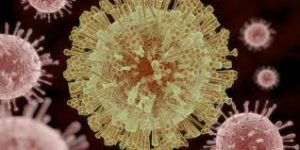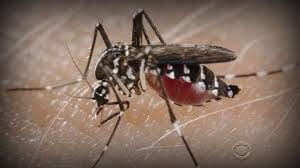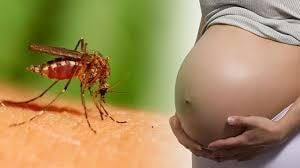Everyone fears of being struck down by a contagious and deadly disease. The Ebola scare has taken its toll from various populations. The last thing anyone needs to hear is for another disease to cause death. That is why the mildest of diseases cause alarm to many. One of the latest diseases that have surfaced lately is the Zika disease.
 Details about Zika
Details about Zika
Zika is caused by the Zika virus. It is transmitted through the bite of a certain species of mosquito—Aedes. The mild symptoms of Zika usually last for up to a week after the person is bitten by the said infected mosquito. If you acquire the Zika disease, you will not be sick enough to be admitted to a hospital. Death is not the usual end result of this disease. Because of the mild strike of Zika, people are usually unaware that they have already been infected.
The Zika infection is more detrimental during pregnancy because it causes a severe brain defects in the fetus such as microcephaly. The advantage of being infected by Zika is that the person will gain immunity from it in case there are future Zika infections.
Origins of Zika
1947 was the fateful year Zika virus was discovered. It was called Zika after Uganda’s Zika Forest. The first cases of human Zika infections were recognizes in 1952. Since that year, Zika outbreaks have been declared and documented in the Pacific Islands, Africa, and Southeast Asia. It is said that outbreaks of Zika have already occurred in many places More than fourteen cases of the Zika disease have been known even before 2007. Some cases were believed to not have been reported. This may be caused by the similarity of Zika’s symptoms to the symptoms of other diseases.
The PAHO (Pan American Health Organization) issued an extensive alert about the initial confirmed infection of Zika in Brazil. This happened in May 2015. The WHO (World Health Organization) announced that Zika was already a PEIC (Public Health Emergency of International Concern), which took place on February 1, 2016. Its local transmission has since been reported in many other territories and countries. The spread was expected to reach new areas after this.
 The places where Zika infections occur are oftentimes difficult to pinpoint. They are also likely to evolve over time. If you are planning to travel, please take note of the information at the CDC Travelers’ Health site for updated information about Zika infections.
The places where Zika infections occur are oftentimes difficult to pinpoint. They are also likely to evolve over time. If you are planning to travel, please take note of the information at the CDC Travelers’ Health site for updated information about Zika infections.
The warning given by the WHO about Zika was prompted by the birth defects it was known to cause. If this virus is not controlled, about four million people could be infected by the year’s end. The Center for Disease Control’s officers have announced that pregnant women should not travel to at least thirty countries, most of which are in Latin America and the Caribbean. These were the primary locations where there has been a growing outbreak. The pregnant women who have been in these places should be tested for Zika infection. The Zika infection seems to be linked to the resulting brain damage and the small heads in newly born children (microcephaly). Neurological defects were also noticed. Zika virus in adults is linked to a certain form of paralysis which is only temporary.
Questions and Answers on Zika
Below are some of the questions and the appropriate answers that concern Zika:
1.Describe Zika. Zika is an infection, new to the people in the Western Hemisphere. It is known to thrive in tropical areas. It is a disease spread by an infected mosquito. It is also related to the West Nile Virus, dengue, and yellow fever. It was discovered in Uganda’s Zika forest but it is a common virus in Asia and Africa. An outbreak eventually occurred in Brazil. Very few are immune to this disease so it is now spreading quickly. It is said that certain tropical areas in the Americas may already be infected. Zika’s symptoms do not give lasting harm to the infected. The main concern is focused on those who develop temporary paralysis and the pregnant women who are infected.
2.What kind of places does Zika usually reach? Zika is highly likely to reach wherever there is a mosquito. Aedes species of mosquito can breed easily in a pool of stagnant water as big as a bottle cap. It is a day biter. Aedes aegypti mosquito is the one that spreads the Zika virus. It is common in Washington, D.C. (during hot weather), the Gulf Coast, Hawaii, and Florida. Aedes albopictus can also transmit the Zika virus. It can reach Chicago and New York during the summer months.
3.How does the Aedes mosquito transmit the Zika virus? The virus is said to be transmitted via the mosquito’s salivary glands. It is the female mosquito that does the biting and infecting. They need blood to nourish the eggs inside their bodies. The female Aedes mosquitoes pick up the Zika virus from an infected person’s blood. The virus moves from the mosquito’s circulatory system to the salivary glands. The mosquito then injects its infected saliva into an uninfected human. The saliva of the infected mosquito has certain proteins which prevent the acquired blood from coagulating. When it bites, the saliva enters your body so that your blood does not clot in the mosquito’s proboscis.
4.How does the Zika virus cause damage to the infant’s brain? Scientists are uncertain. It is possible that microcephaly results from the Zika infection in pregnant women. There was a surge of this condition in babies in northern Brazil. There were also reports which indicated that the Zika virus can cross the placenta, thereby attacking the nerve cells of the fetus. Some of these nerve cells develop into the baby’s brain.
5.Can Zika be transmitted through sex? Yes, it can. Many experts believe that most cases of Zika infections are contracted through mosquito bites and not sex. Yet, there have been Zika cases which were reported to have been contracted through sexual intercourse. These cases happened in four countries. The reports about these cases were based on a man’s transmission of the Zika disease to a woman who was not infected at all. Live Zika virus has been detected in semen and stayed alive for at least two months even after the symptoms were gone. Experts believe that the testes or the prostate acts as the virus reservoir. These male parts protect the ZIka virus from your active immune system. There are some cases in some male patients who had traces of blood in the semen. Pregnant women are then advised to stay clear of men who have traveled to countries where the Zika virus is active. They are also advised to engage in sexual activity only with their partners. They should also use a condom. They are also given the option to abstain from sex (any kind of sex including oral sex, vaginal sex, or anal sex).
6.What is the condition known as microcephaly? This is a condition manifested by a small head, usually accompanied by damage to the brain. An estimated fifteen percent of microcephaly cases manifested a small head without brain damage. The remaining cases indicate that the baby’s brain may not have been given the chance to develop during the period of pregnancy. The baby’s brain may also have stopped developing during the first years of the newborn’s life. The affected children may have hearing loss, developmental retardation, and even deficits in intellect. Microcephaly is known to be caused by genetic abnormalities. It can also be caused by certain infections such as cytomegalovirus, toxoplasmosis, or German measles. It is also a condition that can happen to an infant whose mother consumes alcohol, diabetic, or extremely malnourished. Scientists say that microcephaly during the first years of the baby’s life may also be a result of brain injury as labor ensued. It is said that there is no treatment for this condition at all.
 7.What are the places, from which pregnant women should stay away? It is said that more than thirty territories and countries should not be visited by pregnant women. Mostly countries in the South Pacific and the Americas should be avoided. Authorities in the World Health expect the Zika outbreak to reach all the countries in the Americas where the dengue virus was spread by the Aedes aegypti. Areas from the Gulf Coast to South of Florida are included. Some of the islands in the Pacific are already having outbreaks. Hawaii is said to be affected soon. Pregnant women can visit areas that are higher than 6,500 feet. This great height does not allow mosquitoes to thrive.
7.What are the places, from which pregnant women should stay away? It is said that more than thirty territories and countries should not be visited by pregnant women. Mostly countries in the South Pacific and the Americas should be avoided. Authorities in the World Health expect the Zika outbreak to reach all the countries in the Americas where the dengue virus was spread by the Aedes aegypti. Areas from the Gulf Coast to South of Florida are included. Some of the islands in the Pacific are already having outbreaks. Hawaii is said to be affected soon. Pregnant women can visit areas that are higher than 6,500 feet. This great height does not allow mosquitoes to thrive.
8.If a pregnant woman visits a country with Zika virus, what should she do? Pregnant women who traveled to Zika positive countries should undergo ultrasound scans and should have their blood tested immediately, even if symptoms are not evident. Pregnant women who live in American Samoa or Puerto Rico should have their blood tested two times during their pregnancy period, even if they do not manifest Zika symptoms. The first week after the symptoms appear is the most accurate time to perform the tests. After this short period, the diagnostic tests will only rely on the antibodies. False positives are possible if the infected pregnant woman with yellow fever or dengue has already been vaccinated against yellow fever or dengue. Every pregnant woman who has a possibility of being infected should undergo at least one ultrasound scan to detect fetal calcifications or microcephaly. The calcifications indicate that the skull of the fetus is hardening already. Ultrasounds should be performed regularly if the woman is proven to be infected. Take note that microcephaly cannot be detected by ultrasound scans at the near end of the second trimester of pregnancy.
 9.Are there tests that indicate if a person is infected with Zika? Zika is difficult to diagnose and is often considered a silent form of infection. Before, Zika was not thought of as a huge threat because it only has mild symptoms. If ever symptoms develop, the patient will have rashes, red eyes, fever, and joint pain. Those who manifest these symptoms are not even admitted to hospitals. There are no tests to detect Zika simply because it is a condition closely linked to yellow fever and dengue. It has a possibility of cross-reacting with the antibody tests of dengue and yellow fever. Detecting the Zika virus requires a tissue or blood sample, taken from person infected for a week already. The sample should then be sent to a complete laboratory, so that the Zika virus can be detected with the use of molecular testing.
9.Are there tests that indicate if a person is infected with Zika? Zika is difficult to diagnose and is often considered a silent form of infection. Before, Zika was not thought of as a huge threat because it only has mild symptoms. If ever symptoms develop, the patient will have rashes, red eyes, fever, and joint pain. Those who manifest these symptoms are not even admitted to hospitals. There are no tests to detect Zika simply because it is a condition closely linked to yellow fever and dengue. It has a possibility of cross-reacting with the antibody tests of dengue and yellow fever. Detecting the Zika virus requires a tissue or blood sample, taken from person infected for a week already. The sample should then be sent to a complete laboratory, so that the Zika virus can be detected with the use of molecular testing.
10.If the woman is of childbearing age but is not planning to get pregnant or is not pregnant, can the woman go to a country with Zika? Yes, but the woman should take birth control on a consistent basis. Generally, half of all pregnancies are not intended. Birth control pills should always be taken by women to prevent unintended pregnancies in Zika affected countries. If they do suddenly become pregnant in those countries, they would have to be subjected to a high level of anxiety, blood tests, and a regular series of ultrasound scans.

11.Is it relevant when a woman is infected during her pregnancy? It is always dangerous if a pregnant woman is infected. It doesn’t matter which trimester. Before, doctors believed that Zika infections during the first trimester are the most detrimental. This is because women who gave birth to babies with microcephaly have been infected during that time. A more recent study showed that even late pregnancy infections result in the same devastating situations. Aside from microcephaly, the infants could also die suddenly in the mother’s womb. The infant survivors of Zika may become deaf or blind at birth. Eventually, they may also suffer from mental disabilities or behavioral difficulties.
Zika may be considered mild infection, but prevention is still key to its annihilation. You should always protect yourself and your loved ones from mosquito bites by installing window or door screens, wearing light colored clothing, closing doors and windows, applying insect repellents (with icaridin, DEET, or iR3535)and by sleeping under reliable mosquito nets. You should also make sure that you eliminate favorite breeding grounds for mosquitoes (used tires, buckets, gutters, pots, and drums with stagnant water in them). Spraying insecticides around the perimeter of your living environment is also an ideal practice.
